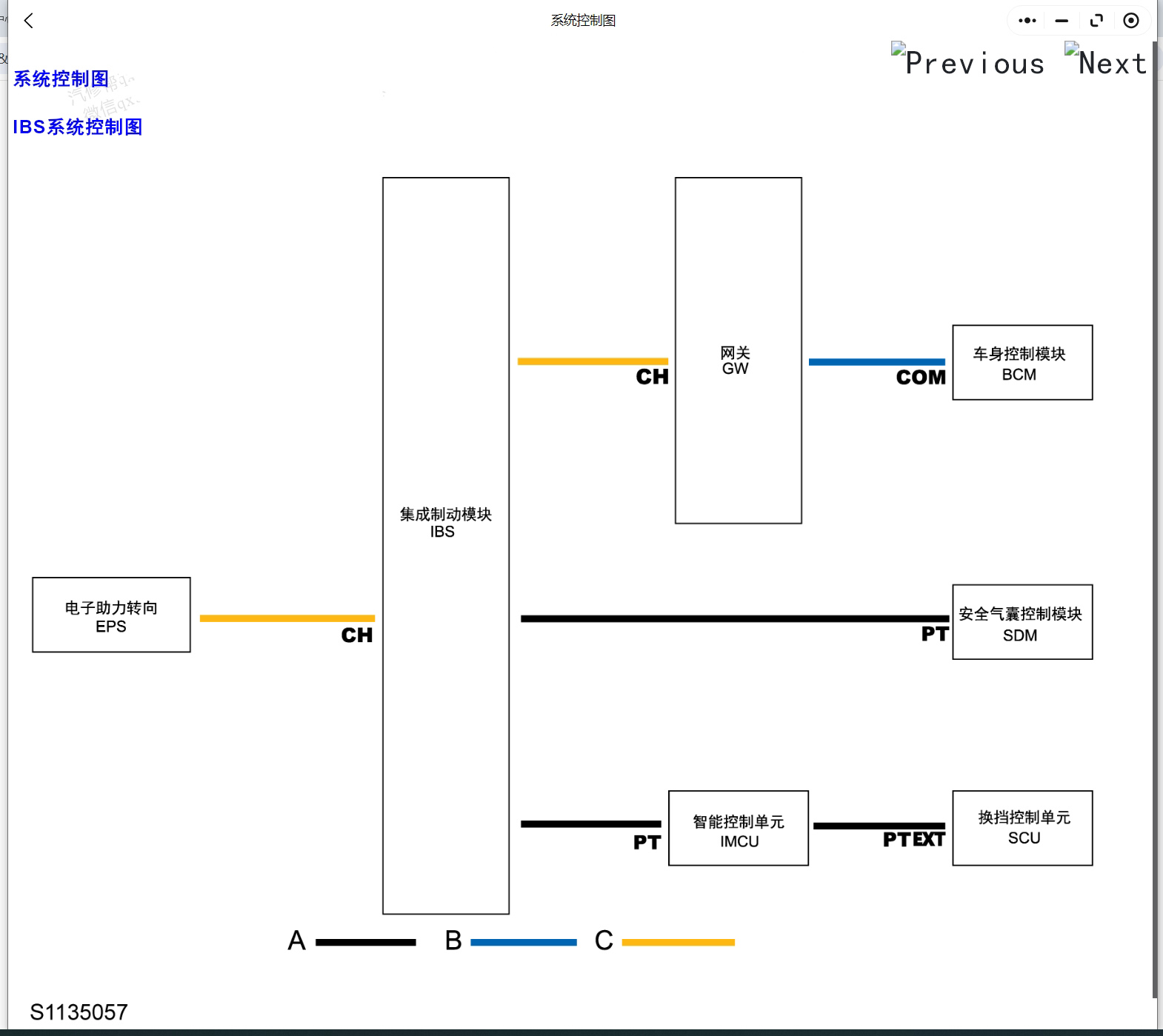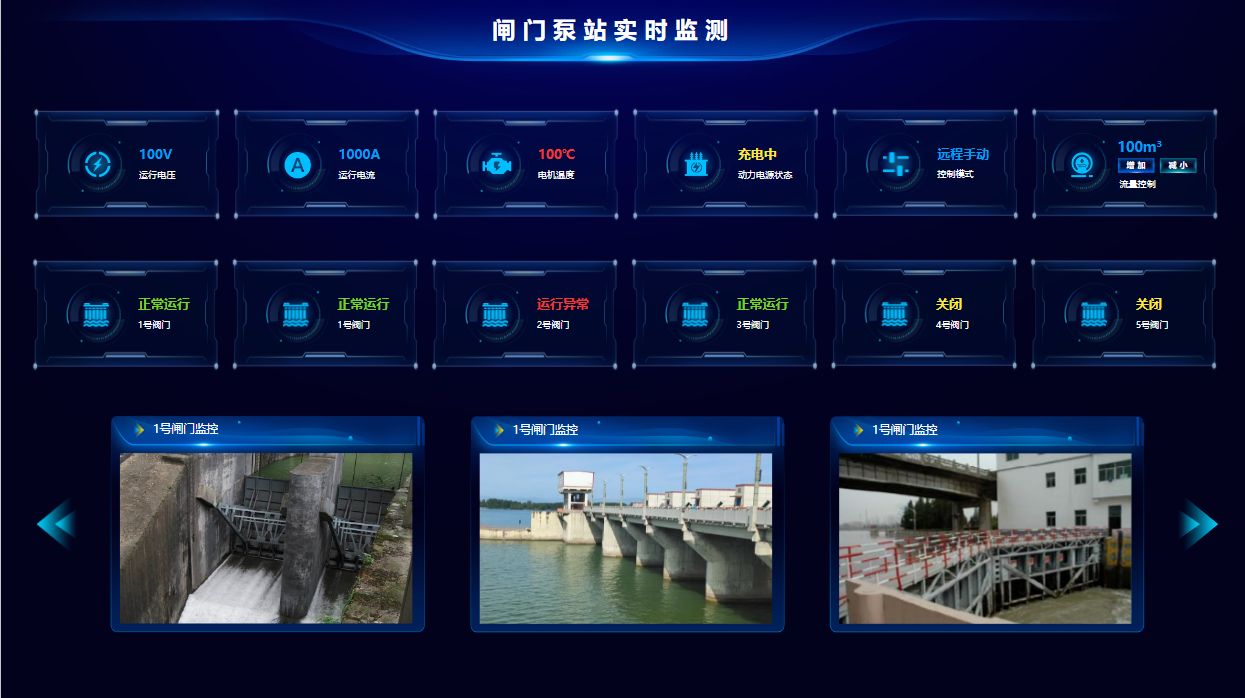笔记来源于黑马程序员相关上课笔记
基于脚手架创建前端工程
环境要求
node.js:前端项目的运行环境(相当于Java的运行环境JDK)
npm:JS的包管理工具/器
npm腾讯镜像:npm config set registry http://mirrors.cloud.tencent.com/npm/
Vue CLI:基于Vue进行快速开发的完整系统,实现交互式的项目脚手架
创建Vue基础项目代码:vue ui
查看node和npm的版本号
node -v
npm -v
安装Vue CLI命令
npm i @vue/cli -g
项目结构

node_modules:当前项目依赖的js包
assets:静态资源存放目录
components:公共组件存放目录
App.vue:项目的主组件,页面的入口文件
main.js:整个项目的入口文件
package.json:项目的配置信息、依赖包管理
vue.config.js:vue-cli配置文件
启动Vue前端项目
若package.json文件中的scripts代码为如下:
"scripts":{
"serve":"vue-cli-service serve",
"build":"vue-cli-service build",
"lint":"vue-cli-service lint"
}
则运行npm run serve
若package.json文件中的scripts代码为如下:
scripts":{
"dev":"vue-cli-service serve",
"build":"vue-cli-service build",
"lint":"vue-cli-service lint"
}
则运行npm run dev
直接使用npm脚本
停止前端项目
Ctrl + C
修改前端服务的端口号
在vue.config.js中配置前端服务端口号:
const { defineConfig } = require('@vue/cli-service')
module.exports = defineConfig({
transpileDependencies: true,
devServer: {
port: 7070
}
})
Vue文件组成
Vue 的组件文件以 .vue 结尾,每个组件由三部分组成:
template、style、script
<template>
<div>
</div>
</template>
<script>
export default {
data() {
return {
name: 'XXX',
};
},
methods: {
Save(){
alert(this.name)
}
}
};
</script>
<style>
</style>
Vue基本使用
文本插值
作用:用来绑定 data 方法返回的对象属性
用法:{{}}(其中也可以使用三目运算等)
属性绑定
作用:为标签的属性绑定 data 方法中返回的属性(单向绑定)
用法:v-bind:xxx,简写为 :xxx
事件绑定
作用:为元素绑定对应的事件
用法:v-on:xxx,简写为 @xxx
双向绑定
作用:表单输入项和 data 方法中的属性进行绑定,任意一方改变都会同步给另一方
用法:v-model
条件渲染
作用:根据表达式的值来动态渲染页面元素
用法:v-if、v-else、v-else-if
还有一个v-show
axios
概念:Axios 是一个基于 promise 的 网络请求库,作用于浏览器和 node.js 中,发送各种方式的http请求。
安装命令
npm install axios
导入命令
import axios from ‘axios’
axios 的主要 API 列表
请求:get和post
axios 的post、get 方法示例
axios.post('/api/XXX/XX',{
username:'admin',
password: '123456'
}).then(res => {
console.log(res.data)
}).catch(error => {
console.log(error.response)
}),
axios.get('/api/XX/XX',{
headers: {
token: ‘xxx.yyy.zzz’
}
})
axios 统一使用方式:axios(config)
{
// `url` 是用于请求的服务器 URL
url: '/user',
// `method` 是创建请求时使用的方法
method: 'get', // 默认值
// `baseURL` 将自动加在 `url` 前面,除非 `url` 是一个绝对 URL。
// 它可以通过设置一个 `baseURL` 便于为 axios 实例的方法传递相对 URL
baseURL: 'https://some-domain.com/api/',
// `transformRequest` 允许在向服务器发送前,修改请求数据
// 它只能用于 'PUT', 'POST' 和 'PATCH' 这几个请求方法
// 数组中最后一个函数必须返回一个字符串, 一个Buffer实例,ArrayBuffer,FormData,或 Stream
// 你可以修改请求头。
transformRequest: [function (data, headers) {
// 对发送的 data 进行任意转换处理
return data;
}],
// `transformResponse` 在传递给 then/catch 前,允许修改响应数据
transformResponse: [function (data) {
// 对接收的 data 进行任意转换处理
return data;
}],
// 自定义请求头
headers: {'X-Requested-With': 'XMLHttpRequest'},
// `params` 是与请求一起发送的 URL 参数
// 必须是一个简单对象或 URLSearchParams 对象
params: {
ID: 12345
},
// `paramsSerializer`是可选方法,主要用于序列化`params`
// (e.g. https://www.npmjs.com/package/qs, http://api.jquery.com/jquery.param/)
paramsSerializer: function (params) {
return Qs.stringify(params, {arrayFormat: 'brackets'})
},
// `data` 是作为请求体被发送的数据
// 仅适用 'PUT', 'POST', 'DELETE 和 'PATCH' 请求方法
// 在没有设置 `transformRequest` 时,则必须是以下类型之一:
// - string, plain object, ArrayBuffer, ArrayBufferView, URLSearchParams
// - 浏览器专属: FormData, File, Blob
// - Node 专属: Stream, Buffer
data: {
firstName: 'Fred'
},
// 发送请求体数据的可选语法
// 请求方式 post
// 只有 value 会被发送,key 则不会
data: 'Country=Brasil&City=Belo Horizonte',
// `timeout` 指定请求超时的毫秒数。
// 如果请求时间超过 `timeout` 的值,则请求会被中断
timeout: 1000, // 默认值是 `0` (永不超时)
// `withCredentials` 表示跨域请求时是否需要使用凭证
withCredentials: false, // default
// `adapter` 允许自定义处理请求,这使测试更加容易。
// 返回一个 promise 并提供一个有效的响应 (参见 lib/adapters/README.md)。
adapter: function (config) {
/* ... */
},
// `auth` HTTP Basic Auth
auth: {
username: 'janedoe',
password: 's00pers3cret'
},
// `responseType` 表示浏览器将要响应的数据类型
// 选项包括: 'arraybuffer', 'document', 'json', 'text', 'stream'
// 浏览器专属:'blob'
responseType: 'json', // 默认值
// `responseEncoding` 表示用于解码响应的编码 (Node.js 专属)
// 注意:忽略 `responseType` 的值为 'stream',或者是客户端请求
// Note: Ignored for `responseType` of 'stream' or client-side requests
responseEncoding: 'utf8', // 默认值
// `xsrfCookieName` 是 xsrf token 的值,被用作 cookie 的名称
xsrfCookieName: 'XSRF-TOKEN', // 默认值
// `xsrfHeaderName` 是带有 xsrf token 值的http 请求头名称
xsrfHeaderName: 'X-XSRF-TOKEN', // 默认值
// `onUploadProgress` 允许为上传处理进度事件
// 浏览器专属
onUploadProgress: function (progressEvent) {
// 处理原生进度事件
},
// `onDownloadProgress` 允许为下载处理进度事件
// 浏览器专属
onDownloadProgress: function (progressEvent) {
// 处理原生进度事件
},
// `maxContentLength` 定义了node.js中允许的HTTP响应内容的最大字节数
maxContentLength: 2000,
// `maxBodyLength`(仅Node)定义允许的http请求内容的最大字节数
maxBodyLength: 2000,
// `validateStatus` 定义了对于给定的 HTTP状态码是 resolve 还是 reject promise。
// 如果 `validateStatus` 返回 `true` (或者设置为 `null` 或 `undefined`),
// 则promise 将会 resolved,否则是 rejected。
validateStatus: function (status) {
return status >= 200 && status < 300; // 默认值
},
// `maxRedirects` 定义了在node.js中要遵循的最大重定向数。
// 如果设置为0,则不会进行重定向
maxRedirects: 5, // 默认值
// `socketPath` 定义了在node.js中使用的UNIX套接字。
// e.g. '/var/run/docker.sock' 发送请求到 docker 守护进程。
// 只能指定 `socketPath` 或 `proxy` 。
// 若都指定,这使用 `socketPath` 。
socketPath: null, // default
// `httpAgent` and `httpsAgent` define a custom agent to be used when performing http
// and https requests, respectively, in node.js. This allows options to be added like
// `keepAlive` that are not enabled by default.
httpAgent: new http.Agent({ keepAlive: true }),
httpsAgent: new https.Agent({ keepAlive: true }),
// `proxy` 定义了代理服务器的主机名,端口和协议。
// 您可以使用常规的`http_proxy` 和 `https_proxy` 环境变量。
// 使用 `false` 可以禁用代理功能,同时环境变量也会被忽略。
// `auth`表示应使用HTTP Basic auth连接到代理,并且提供凭据。
// 这将设置一个 `Proxy-Authorization` 请求头,它会覆盖 `headers` 中已存在的自定义 `Proxy-Authorization` 请求头。
// 如果代理服务器使用 HTTPS,则必须设置 protocol 为`https`
proxy: {
protocol: 'https',
host: '127.0.0.1',
port: 9000,
auth: {
username: 'mikeymike',
password: 'rapunz3l'
}
},
// 参见 https://axios-http.com/zh/docs/cancellation
cancelToken: new CancelToken(function (cancel) {
}),
// `decompress` 表示响应体是否应该自动解压缩。
// 如果设置为 `true`,还将从所有解压缩的响应对象中移除 'content-encoding' 头
// 仅适用于 Node.js(XHR 无法关闭解压缩)
decompress: true // 默认值
}
原文:Axios 请求配置,示例:post中嵌套了get请求
axios({
url: '/api/XX/XX',
method:'post',
data: {
username:'admin',
password: '123456'
}
}).then((res) => {
console.log(res.data.data.token)
axios({
url: '/api/XXX/XX',
method: 'get',
params: {id: 100},
headers: {
token: res.data.data.token //用户登录时生成的token
}
})
}).catch((error) => {
console.log(error)
})
解决跨域问题
在 vue.config.js 文件中配置代理:
const { defineConfig } = require('@vue/cli-service')
module.exports = defineConfig({
transpileDependencies: true,
devServer: {
port: 7070,
proxy: {
'/api': {
target: 'http://localhost:8080',
pathRewrite: {
'^/api': '' //这里是将跨域时的/api替换为空字符串
}
}
}
}
})
Router
不同的访问路径,对应不同的页面展示,用不同视图组件替换vue单页面内容(vue 属于单页面应用)
npm install vue-router
路由组成
VueRouter:路由器,根据路由请求在路由视图中动态渲染对应的视图组件
<router-link>:路由链接组件,浏览器会解析成超链接
<router-view>:路由视图组件,用来展示与路由路径匹配的视图组件

路由配置
src/router/index.js:
import Vue from 'vue'
import VueRouter from 'vue-router'
import HomeView from '../views/HomeView.vue'
Vue.use(VueRouter)
//维护路由表,某个路由路径对应哪个视图组件
const routes = [
{
path: '/',
name: 'home',
component: HomeView
},
{
path: '/about',
name: 'about',
// route level code-splitting
// this generates a separate chunk (about.[hash].js) for this route
// which is lazy-loaded when the route is visited.
component: () => import(/* webpackChunkName: "about" */ '../views/AboutView.vue')
}
,
{
path: '/404',
component: () => import('../views/404View.vue')
},
{
//若请求的路由不存在,则跳转到/404页面
path: '*',
redirect: '/404'
}
]
const router = new VueRouter({
routes
})
export default router
App.vue
this.$router 是获取到路由对象
push方法是根据url进行跳转
使用编程武路由跳转两次跳转为同一个路径时会报错
再点击按钮时会报错,修改方法:
jump(){this.$router.push('/about',() => {})}
<template>
<div id="app">
<nav>
<router-link to="/">Home</router-link> | <!--相当于超链接-->
<router-link to="/about">About</router-link> |
<router-link to="/test">Test</router-link> |
<input type="button" value="编程式路由跳转" @click="jump"/>
<!--相当于 <router-link to="/">Home</router-link>-->
</nav>
<!--视图组件展示的位置,相当于占位符,必须存在-->
<router-view/> //
</div>
</template>
<script>
export default {
methods: {
jump() {
//使用编程式路由跳转方式
this.$router.push('/about')
}
}
}
</script>
<style>
#app {
font-family: Avenir, Helvetica, Arial, sans-serif;
-webkit-font-smoothing: antialiased;
-moz-osx-font-smoothing: grayscale;
text-align: center;
color: #2c3e50;
}
nav {
padding: 30px;
}
nav a {
font-weight: bold;
color: #2c3e50;
}
nav a.router-link-exact-active {
color: #42b983;
}
</style>
嵌套路由实现步骤
概念:组件内要切换内容,就需要用到嵌套路由(子路由),可以理解为左侧为导航栏,点击任意一个部分可以仅更新指定区域的内容。
安装并导入 elementui,实现页面布局
若使用的时vue ui图形化界面创建的项目,则在创建项目时已经将对应的包导入了,无需执行下述指令:
npm i element-ui -S
更新main.js
import ElementUI from 'element-ui';
import 'element-ui/lib/theme-chalk/index.css';
//全局使用ElementUI
Vue.use(ElementUI);
完整main.js代码:
import Vue from 'vue'
import App from './App.vue'
import router from './router'
import ElementUI from 'element-ui';
import 'element-ui/lib/theme-chalk/index.css';
Vue.config.productionTip = false
//全局使用ElementUI
Vue.use(ElementUI);
new Vue({
router,
render: h => h(App)
}).$mount('#app')
提供子视图组件,用于效果展示
在src/view/container创建P1View.vue、P2View.vue、P3View.vue三个.vue文件
下面展示其实一个子视图
<template>
<div>
这是P1 View
</div>
</template>
<script>
export default {
}
</script>
<style>
.el-header, .el-footer {
background-color: #B3C0D1;
color: #333;
text-align: center;
line-height: 60px;
}
.el-aside {
background-color: #D3DCE6;
color: #333;
text-align: center;
line-height: 200px;
}
.el-main {
background-color: #E9EEF3;
color: #333;
text-align: center;
line-height: 160px;
}
body > .el-container {
margin-bottom: 40px;
}
.el-container:nth-child(5) .el-aside,
.el-container:nth-child(6) .el-aside {
line-height: 260px;
}
.el-container:nth-child(7) .el-aside {
line-height: 320px;
}
</style>
在 src/router/index.js 中配置路由映射规则(嵌套路由配置)
src/router/index.js:
import Vue from 'vue'
import VueRouter from 'vue-router'
import HomeView from '../views/HomeView.vue'
Vue.use(VueRouter)
//维护路由表,某个路由路径对应哪个视图组件
const routes = [
{
path: '/',
name: 'home',
component: HomeView
},
{
path: '/about',
name: 'about',
// route level code-splitting
// this generates a separate chunk (about.[hash].js) for this route
// which is lazy-loaded when the route is visited.
component: () => import(/* webpackChunkName: "about" */ '../views/AboutView.vue')
}
,
{
path: '/404',
component: () => import('../views/404View.vue')
},
{
path: '/c',
component: () => import('../views/container/ContainerView.vue'),
redirect: '/c/p1',
//嵌套路由(子路由),对应的组件会展示在当前组件内部
children: [
{
path: '/c/p1',
component: () => import('../views/container/P1View.vue')
},
{
path: '/c/p2',
component: () => import('../views/container/P2View.vue')
},
{
path: '/c/p3',
component: () => import('../views/container/P3View.vue')
}
]
},
{
path: '*',
redirect: '/404'
}
]
const router = new VueRouter({
routes
})
export default router
其中以下代码实现访问/c路由时默认跳转至/c/p1
{
path: '/c',
component: () => import('../views/container/ContainerView.vue'),
redirect: '/c/p1',
//嵌套路由(子路由),对应的组件会展示在当前组件内部
children: [
{
path: '/c/p1',
component: () => import('../views/container/P1View.vue')
},
{
path: '/c/p2',
component: () => import('../views/container/P2View.vue')
},
{
path: '/c/p3',
component: () => import('../views/container/P3View.vue')
}
]
}
创建布局容器
src/views/container/ContainerView.vue文件
- 在布局容器视图中添加
<router-view>,实现子视图组件展示 - 在布局容器视图中添加
<router-link>,实现路由请求 - 子路由变化,切换的是【ContainerView 组件】中
<router-view></router-view>部分的内容
<template>
<el-container>
<el-header>Header</el-header>
<el-container>
<el-aside width="200px">
<router-link to="/c/p1">P1</router-link><br>
<router-link to="/c/p2">P2</router-link><br>
<router-link to="/c/p3">P3</router-link><br>
</el-aside>
<el-main>
<router-view/>
</el-main>
</el-container>
</el-container>
</template>
<script>
export default {
}
</script>
<style>
.el-header, .el-footer {
background-color: #B3C0D1;
color: #333;
text-align: center;
line-height: 60px;
}
.el-aside {
background-color: #D3DCE6;
color: #333;
text-align: center;
line-height: 200px;
}
.el-main {
background-color: #E9EEF3;
color: #333;
text-align: center;
line-height: 160px;
}
body > .el-container {
margin-bottom: 40px;
}
.el-container:nth-child(5) .el-aside,
.el-container:nth-child(6) .el-aside {
line-height: 260px;
}
.el-container:nth-child(7) .el-aside {
line-height: 320px;
}
</style>
状态管理 vuex
vuex 可以在多个组件之间共享数据,并且共享的数据是响应式的,双向绑定。
- 在store对象的state属性中定义共享数据
- 在store对象的 mutations 属性中定义修改共享数据的函数
- 在store对象的 actions 属性中定义调用 mutation 的函数,可以进行异步操作
- mutations中的函数不能直接调用,只能通过store对象的commit方法调用
- actions中定义的函数不能直接调用,只能通过store对象的dispatch方法调用
安装vuex
在控制台运行以下代码,如上一样,如果是在vue ui的可视化界面已勾选vuex,则无需执行以下命令。
npm install vuex@next --save
导入项目后可以在src/store/index.js文件中统一管理共享数据
核心组成
state:状态对象,集中定义各个组件共享的数据,不能修改共享数据
mutations:类似于一个事件,用于修改共享数据,要求必须是同步函数
actions:类似于mutation,可以包含异步操作,通过调用mutation来改变共享数据
在main.js中:
import Vue from 'vue'
import App from './App.vue'
import store from './store'
Vue.config.productionTip = false
new Vue({
store,//使用vuex功能
render: h => h(App)
}).$mount('#app')
在App.vue中:
<template>
<div id="app">
欢迎你,{{$store.state.name}}
<input type="button" value="通过mutations修改共享数据" @click="handleUpdate"/>
<input type="button" value="调用actions中定义的函数" @click="handleCallAction"/>
<img alt="Vue logo" src="./assets/logo.png">
<HelloWorld msg="Welcome to Your Vue.js App"/>
</div>
</template>
<script>
import HelloWorld from './components/HelloWorld.vue'//必须在HelloWorld.vue文件中给Vue的name命名为HelloWorld
export default {
name: 'App',
components: {
HelloWorld
},
methods: {
handleUpdate(){
//mutations中定义的函数不能直接调用,必须通过这种方式来调用
//setName为mutations中定义的函数名称,manager为传递的参数
//默认使用方法:this.$store.commit('mutation函数名','传递形参值')
this.$store.commit('setName','manager')
},
handleCallAction() {
//调用actions中定义的函数,setNameByAxios为函数名称
//默认使用方法:this.$store.dispatch('action函数名')
this.$store.dispatch('setNameByAxios')
}
}
}
</script>
<style>
#app {
font-family: Avenir, Helvetica, Arial, sans-serif;
-webkit-font-smoothing: antialiased;
-moz-osx-font-smoothing: grayscale;
text-align: center;
color: #2c3e50;
margin-top: 60px;
}
</style>
在src/store/index.js中:
import Vue from 'vue'
import Vuex from 'vuex'
import axios from 'axios'
Vue.use(Vuex)
//集中管理多个组件共享的数据
export default new Vuex.Store({
//集中定义共享数据
state: {
name: 'Oliver'
},
getters: {
},
//通过当前属性中定义的函数修改共享数据,必须都是同步操作,修改共享数据只能通过mutation实现
mutations: {
setName(state,newName) {
state.name = newName
}
},
//通过actions调用mutation,在actions中可以进行异步操作
actions: {
setNameByAxios(context){//默认使用:context,上下文
axios({
url: '/api/XX/XX',
method: 'post',
data: {
username: 'admin',
password: '123456'
}
}).then(res => {
if(res.data.code == 1){
//异步请求后,需要修改共享数据
//在actions中调用mutation中定义的setName函数
//这里采用了同步请求的方式
context.commit('setName',res.data.data.name)
}
})
}
},
modules: {
}
})
TypeScript
简称TS,它是JS的超集,在JS的基础上增加了类型支持,文件后缀名为.ts,在编译时就会检查类型错误,JS可以写的他都可以写。
安装
全局安装
npm install -g typescript
查看版本号
tsc -v
编译
tsc hello.ts
运行
node hello.js
例子1:常见类型
//简单举例
//字符串类型
let name:string = '123'
//数字类型
let age:number = 18
//布尔类型
let isTrue:boolean =true
//字面量类型,限定数据的取值范围
let s:'a'|'b'|'c'
//void
let msg:string = '123'
const setName = (name:string):string =>{
return msg
}
例子2:接口
//定义一个接口,名字为cat
interface cat
name: string,
age: number
//可以通过在属性名后面加上?,表示当前属性为可选
sex?:number
//定义变量为cat类型
const c1:cat={name:'小',age:1}
//const c2:cat={name:'小花'} // 错误:多出 sex 属性
//const c3:cat ={ name:'小黑',age:1,sex:'公'} // 错误:缺少 age 属性
console.1og(c1)
例子3:类
//定义一个类,名称为user
class User{
name:string;//属性
constructor(name:string){
//构造方法
this.name = name
}
//方法
study(){
console.log(this.name+'正在学习')
}
const user= new User('张二')
console.log(user.name)
user.study()
例子4:类实现接口
interface Animal{
name: string
eat(): void
}
//定义一个类Bird,实现上面的 Anima1 接口
class Bird implements Animal{
name: string
constructor(name: string){
this.name = name
}
eat(): void {
console.log(this.name +'eat')
}
//创建类型为Bird的对象
const b1 = new Bird('杜鹃')
console.1og(b1.name)
b1.eat()
//定义一个类,继承上面的类
class Parrot extends Bird{
say(){
console.log(this.name +'say hello')
}
const myParrot =new Parrot('Polly')
myParrot.eat()
myParrot.say()
console.log(myParrot.name)



















